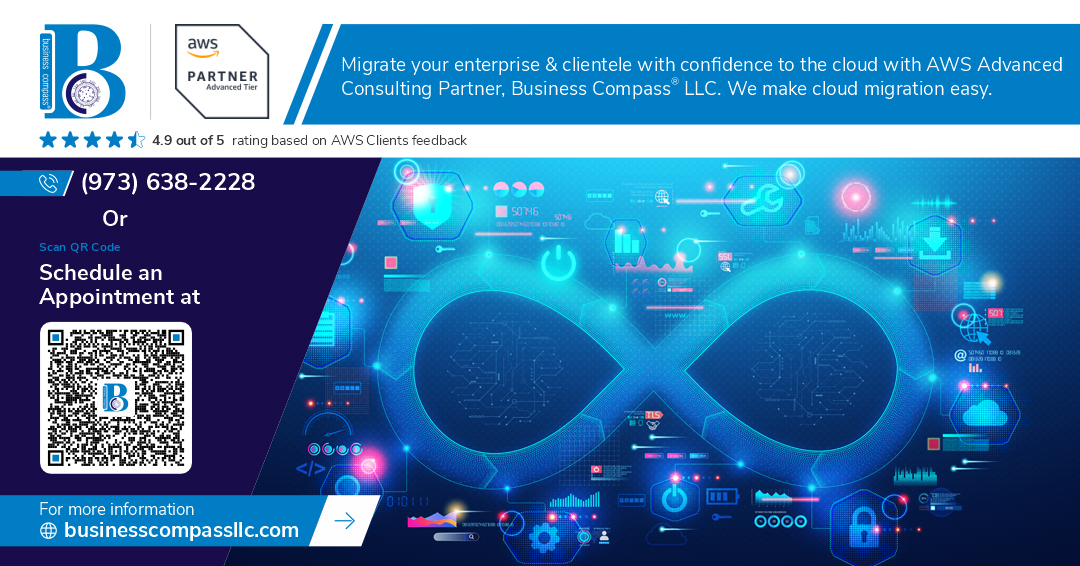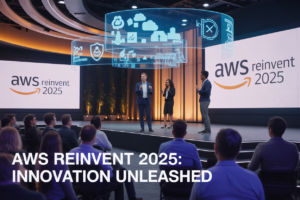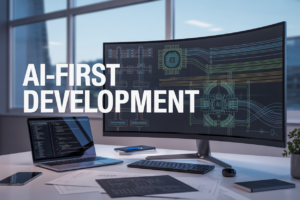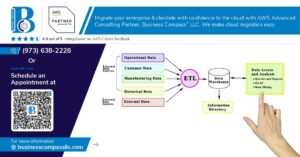Managing AWS infrastructure manually leaves your cloud environment vulnerable to security gaps and human errors. AWS DevSecOps changes this by embedding security directly into your automated infrastructure deployment process, giving you consistent protection at scale.
This guide is for cloud engineers, DevOps teams, and security professionals who want to build secure, automated AWS infrastructure using infrastructure as code AWS practices. You’ll learn how to shift from reactive security patches to proactive security automation that protects your cloud resources from day one.
We’ll cover the essential AWS security services that integrate seamlessly into your DevSecOps pipeline, including how to leverage AWS CloudFormation security features and other cloud security automation tools. You’ll also discover how to build secure infrastructure templates that include security controls by default, eliminating the guesswork from secure deployments. Finally, we’ll walk through setting up continuous security monitoring systems that catch threats early and respond automatically, keeping your infrastructure protected around the clock.
Understanding DevSecOps Fundamentals for AWS Cloud Security
Define DevSecOps principles and core benefits
DevSecOps transforms traditional software development by embedding security practices directly into every stage of the development and operations lifecycle. This approach shifts security from being a final checkpoint to becoming a shared responsibility across development, security, and operations teams. Core principles include implementing security as code, automating security testing, and creating continuous feedback loops that catch vulnerabilities early. Teams practicing AWS DevSecOps experience faster deployment cycles while maintaining robust security postures, reduced security incidents through proactive threat detection, and improved compliance through automated policy enforcement. The financial benefits include lower remediation costs since security issues get caught before reaching production environments.
Identify security gaps in traditional DevOps workflows
Traditional DevOps workflows often treat security as an afterthought, creating dangerous blind spots in cloud infrastructure security. Development teams typically focus on speed and functionality while leaving security reviews until the end of the pipeline, resulting in expensive last-minute fixes and delayed releases. Common gaps include inadequate access controls where developers receive excessive permissions, missing security testing in CI/CD pipelines, and lack of runtime security monitoring. Manual security reviews become bottlenecks that slow down rapid deployment cycles, leading teams to bypass security checks entirely. These workflows also fail to provide security teams with visibility into infrastructure changes, creating compliance risks and exposing organizations to data breaches and regulatory violations.
Explore AWS-specific security challenges and opportunities
AWS environments present unique security challenges that require specialized DevSecOps approaches beyond traditional on-premises security models. The shared responsibility model means organizations must secure their applications, data, and configurations while AWS handles underlying infrastructure security. Managing Identity and Access Management (IAM) policies at scale becomes complex, with misconfigured permissions leading to privilege escalation risks. However, AWS security services like GuardDuty, Security Hub, and Config provide powerful automation opportunities for continuous security monitoring. Infrastructure as code AWS tools such as CloudFormation and CDK enable security policies to be version-controlled and consistently applied across environments. These native AWS security services integrate seamlessly with automated AWS security pipelines, enabling real-time threat detection and automated remediation workflows.
Essential AWS Security Services for Infrastructure as Code
Leverage AWS CloudFormation for secure template deployment
AWS CloudFormation serves as your infrastructure as code backbone, enabling teams to define AWS resources through JSON or YAML templates. Templates enforce consistent security configurations across environments, preventing manual misconfigurations that often lead to vulnerabilities. CloudFormation’s drift detection identifies unauthorized changes, while stack policies protect critical resources from accidental modifications. Integration with AWS Secrets Manager and Parameter Store keeps sensitive data encrypted and separate from code repositories. Templates can include IAM roles with least-privilege access, security groups with minimal required ports, and encrypted storage by default. This approach transforms infrastructure deployment into a repeatable, auditable process that scales security practices across your entire AWS environment.
Implement AWS Config for compliance monitoring and drift detection
AWS Config continuously monitors your infrastructure configurations, automatically detecting when resources deviate from established security baselines. Rules can evaluate whether EC2 instances have required security patches, S3 buckets maintain proper encryption settings, or IAM policies follow organizational standards. The service creates a complete audit trail of configuration changes, showing exactly when modifications occurred and who initiated them. Remediation actions can automatically fix non-compliant resources, such as enabling encryption on unprotected storage or removing excessive permissions. Config integrates seamlessly with CloudFormation templates, validating that deployed infrastructure matches your secure infrastructure templates and maintaining compliance throughout the deployment lifecycle.
Utilize AWS Security Hub for centralized security posture management
Security Hub aggregates security findings from multiple AWS security services and third-party tools into a single dashboard, providing comprehensive visibility into your cloud security posture. The service normalizes findings from GuardDuty, Inspector, Config, and other sources using the AWS Security Finding Format, making it easier to prioritize and respond to threats. Custom security standards based on industry frameworks like CIS or PCI DSS can be configured to match your organization’s requirements. Automated workflows can trigger remediation actions when specific finding types are detected, creating a continuous security monitoring loop. Security Hub’s integration with AWS security services creates a centralized command center for DevSecOps teams managing cloud infrastructure security across multiple accounts and regions.
Integrate AWS GuardDuty for threat detection automation
GuardDuty uses machine learning and threat intelligence to detect malicious activity within your AWS environment, analyzing VPC Flow Logs, DNS logs, and CloudTrail events. The service automatically identifies suspicious behaviors like cryptocurrency mining, data exfiltration attempts, or compromised instances communicating with known malicious IP addresses. Custom threat lists can be configured to monitor for organization-specific indicators of compromise. GuardDuty findings integrate directly with Security Hub and can trigger automated responses through Lambda functions or EventBridge rules. This enables immediate containment actions like isolating compromised instances, blocking malicious IP addresses, or rotating potentially compromised credentials. The service requires no agents or additional infrastructure, making it an essential component of any automated AWS security pipeline.
Building Secure Infrastructure Templates with Code
Design security-first CloudFormation and Terraform templates
Security-first infrastructure as code AWS templates should embed security controls directly into your CloudFormation and Terraform configurations. Build templates that automatically apply security groups with minimal required ports, enable logging for all resources, and configure encryption by default. Start with secure baseline templates that include IAM roles with restrictive policies, VPC configurations with private subnets, and mandatory tagging for compliance. Your templates should fail deployment if security requirements aren’t met, ensuring every infrastructure deployment maintains consistent security posture from day one.
Implement least privilege access controls from the ground up
Least privilege access controls require building IAM policies that grant only the minimum permissions necessary for each service and user. Create role-based templates that automatically generate specific IAM roles for different workloads – separate roles for EC2 instances, Lambda functions, and database access. Use AWS managed policies as starting points, then customize them to remove unnecessary permissions. Implement cross-account access patterns with explicit trust relationships and time-based access controls. Your automated AWS security templates should include permission boundaries that prevent privilege escalation and regular access reviews through code.
Configure automated encryption for data at rest and in transit
Automated encryption implementation starts with enabling KMS encryption by default across all storage services in your secure infrastructure templates. Configure S3 buckets with server-side encryption using customer-managed keys, enable EBS volume encryption for all instances, and set up RDS encryption with automatic key rotation. For data in transit, your templates should enforce HTTPS/TLS connections, configure Application Load Balancers with SSL certificates, and enable VPC Flow Logs encryption. Build reusable encryption modules that automatically generate and manage encryption keys while maintaining compliance with your organization’s key management policies.
Establish network segmentation through VPC best practices
Network segmentation through VPC design creates isolated environments that limit blast radius during security incidents. Design multi-tier architectures with separate subnets for web, application, and database layers, each with specific route tables and security group rules. Implement NAT gateways for outbound internet access from private subnets and configure VPC endpoints for AWS services to avoid internet routing. Your AWS DevSecOps templates should include network ACLs as additional security layers, flow logs for monitoring, and Transit Gateway configurations for secure cross-VPC communication in complex environments.
Create reusable security modules for consistent deployments
Reusable security modules ensure consistent security configurations across all infrastructure deployments. Build modular components for common security patterns like secure databases, hardened web servers, and compliant logging configurations. Create parameterized modules that accept environment-specific variables while maintaining core security controls. Your cloud security automation modules should include built-in testing, documentation, and version control integration. Publish these modules to internal repositories where teams can consume them as building blocks, ensuring every deployment follows your organization’s security standards without requiring deep security expertise from development teams.
Automated Security Testing and Validation Pipelines
Integrate static code analysis tools for infrastructure scanning
Catch security flaws before they reach production by embedding static analysis tools like Checkov, tfsec, and AWS Config Rules directly into your DevSecOps pipeline. These tools automatically scan your infrastructure as code templates, identifying misconfigurations such as open security groups, unencrypted storage, and overprivileged IAM roles. Configure your CI/CD workflows to fail builds when critical security violations are detected, forcing developers to address issues immediately rather than accumulating technical debt.
Implement automated compliance checks against security benchmarks
Build compliance validation directly into your AWS infrastructure deployment process using automated frameworks that check against industry standards like CIS Benchmarks, SOC 2, and PCI DSS. Tools like AWS Config, Cloud Custodian, and custom Lambda functions can continuously evaluate your cloud resources against compliance requirements, generating detailed reports and triggering remediation workflows. Set up automated compliance gates that prevent non-compliant infrastructure from reaching production environments while maintaining audit trails for regulatory purposes.
Deploy vulnerability scanning for container images and dependencies
Secure your containerized applications by integrating vulnerability scanners like Amazon ECR Image Scanning, Twistlock, or Aqua Security into your build pipeline. These tools analyze container images for known CVEs, malware, and security misconfigurations before pushing to registries. Implement dependency scanning for your application code using tools like Snyk or OWASP Dependency-Check to identify vulnerable third-party libraries and automatically generate pull requests with security patches when available.
Execute penetration testing automation within CI/CD workflows
Automate security testing by incorporating dynamic analysis tools and lightweight penetration testing frameworks into your continuous integration process. Deploy tools like OWASP ZAP, Nuclei, or custom security test suites that automatically probe your applications for common vulnerabilities like SQL injection, XSS, and authentication bypasses. Schedule automated security scans to run against staging environments after each deployment, generating actionable reports that developers can address before code reaches production systems.
Continuous Monitoring and Incident Response Automation
Set up real-time security alerting and notification systems
AWS CloudWatch paired with AWS SNS creates powerful real-time alerting for your DevSecOps pipeline. Configure CloudWatch alarms to monitor critical security metrics like failed login attempts, unusual API calls, and resource configuration changes. Set up multi-channel notifications through Slack, email, and PagerDuty to ensure your security team responds quickly to threats. Amazon GuardDuty automatically detects malicious activity and integrates seamlessly with your alerting infrastructure, while AWS Config monitors compliance violations across your infrastructure as code deployments.
Create automated remediation workflows for common security issues
Lambda functions serve as the backbone for automated security remediation in AWS environments. Build workflows that automatically revoke compromised IAM credentials, isolate infected EC2 instances, and patch vulnerable systems without manual intervention. Use AWS Systems Manager to orchestrate remediation across multiple resources, while Step Functions coordinate complex multi-step security responses. CloudFormation templates should include automated rollback mechanisms that revert to secure configurations when security violations occur, maintaining your cloud infrastructure security posture.
Implement log aggregation and analysis for security insights
Centralize security logs using Amazon CloudTrail, VPC Flow Logs, and application logs in CloudWatch Logs for comprehensive visibility. Deploy Amazon OpenSearch Service to analyze log patterns and detect security anomalies across your AWS DevSecOps environment. Set up automated log parsing that identifies indicators of compromise, failed authentication attempts, and suspicious network traffic. Use AWS Security Hub to aggregate findings from multiple security services, creating a unified dashboard for continuous security monitoring and threat detection.
Establish automated backup and disaster recovery procedures
Design disaster recovery automation using AWS Backup policies that protect critical infrastructure and data across regions. Create Lambda-triggered backup jobs that execute after infrastructure deployments, ensuring your secure infrastructure templates and configurations remain recoverable. Implement cross-region replication for RDS databases and S3 buckets containing security-critical data. Use CloudFormation StackSets to replicate your entire secure infrastructure across availability zones, enabling rapid recovery from security incidents while maintaining your automated AWS security standards.
Scaling DevSecOps Practices Across Your Organization
Develop security governance frameworks for multi-account environments
Enterprise AWS environments demand robust governance structures that span multiple accounts and organizational units. Start by establishing security baselines through AWS Organizations Service Control Policies (SCPs) that enforce mandatory security controls across all accounts. Implement AWS Config rules organization-wide to monitor compliance with your security standards automatically. Create centralized logging using AWS CloudTrail and AWS Security Hub to aggregate security findings from all accounts into a single dashboard. Design account vetting processes that require security reviews before new AWS accounts go live. Use AWS Control Tower to automate account provisioning with pre-configured security guardrails. Establish clear ownership models where each account has designated security champions responsible for maintaining compliance within their domain.
Train development teams on secure coding practices for infrastructure
Building secure infrastructure as code requires dedicated training programs that go beyond basic AWS knowledge. Create hands-on workshops where developers practice writing secure CloudFormation templates and Terraform configurations. Focus training on common infrastructure security anti-patterns like hardcoded credentials, overly permissive IAM policies, and unencrypted resources. Develop internal playbooks with approved infrastructure patterns that teams can reuse safely. Implement peer review processes specifically for infrastructure code changes, ensuring experienced team members validate security configurations before deployment. Establish security office hours where developers can get real-time guidance on complex security scenarios. Build internal certification programs that validate team members’ understanding of AWS DevSecOps principles and secure infrastructure practices.
Measure and optimize security metrics and KPIs
Effective DevSecOps scaling requires concrete metrics that demonstrate security posture improvements over time. Track key indicators like mean time to remediation (MTTR) for security vulnerabilities, percentage of infrastructure deployed through approved templates, and security test coverage across your deployment pipelines. Monitor compliance scores from AWS Config rules and Security Hub findings to gauge overall security health. Measure developer productivity metrics to ensure security processes don’t create bottlenecks that slow down delivery. Create dashboards that show security trend data to leadership, highlighting areas where automated security controls have reduced manual effort. Establish regular security retrospectives where teams analyze security incidents and identify process improvements. Use these metrics to justify continued investment in AWS DevSecOps tooling and demonstrate business value from security automation initiatives.
DevSecOps isn’t just a buzzword – it’s your safety net for keeping AWS infrastructure secure while moving fast. By weaving security into every step of your infrastructure code, from the initial templates to ongoing monitoring, you’re building a system that catches problems before they become disasters. The combination of automated security testing, continuous validation, and real-time monitoring creates a robust defense that scales with your business.
Getting started doesn’t mean overhauling everything at once. Pick one area, maybe your infrastructure templates or testing pipeline, and begin there. As your team gets comfortable with these practices, you can expand across your organization. The investment you make now in setting up proper DevSecOps workflows will pay dividends when you can deploy confidently, knowing your security guardrails are always working behind the scenes.




















